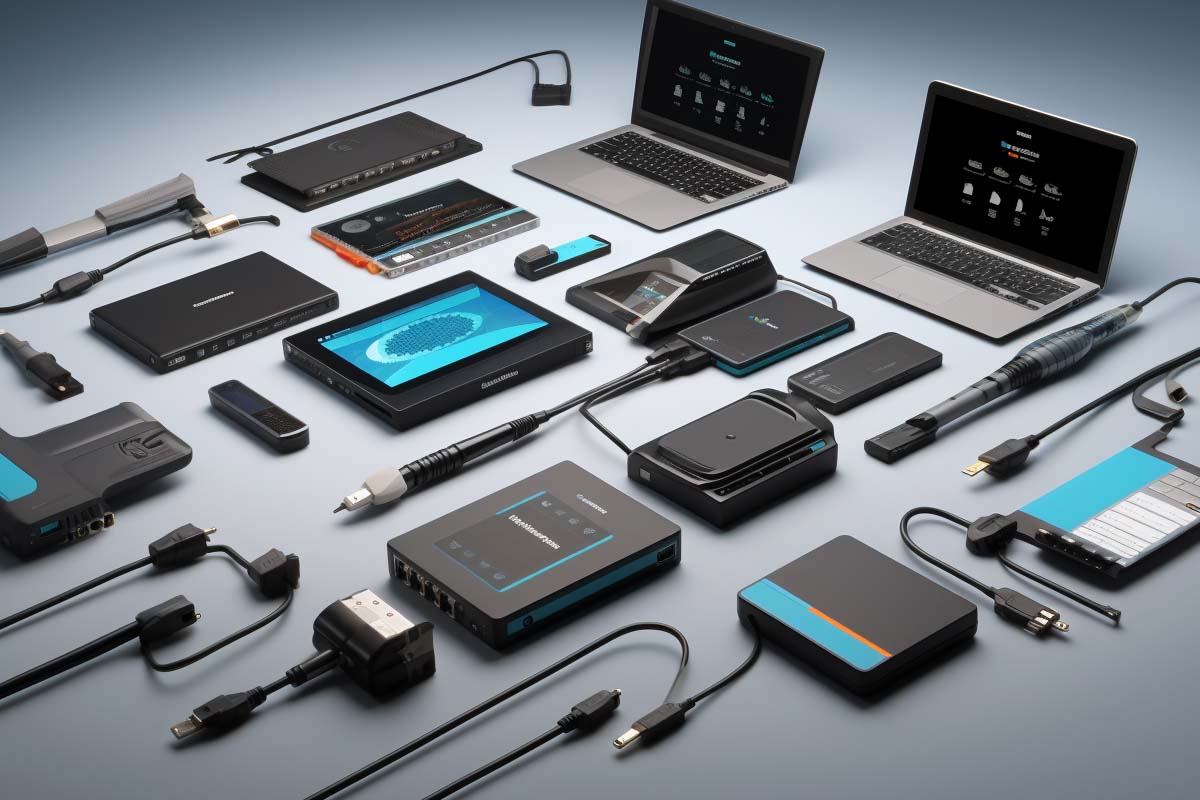What Is Off-Canvas Navigation?
Definition: Off-Canvas NavigationOff-canvas navigation is a design pattern primarily used in web development and interface design for mobile devices. It refers to a navigational menu that is hidden out of

Peripheral failures refer to problems with external devices connected to a computer, like keyboards, mice, printers, and monitors. These issues can range from minor inconveniences to major disruptions in workflow and productivity.
Common Causes of Peripheral Failures

View our comprehensive training series covering all the key elements and certifications needed to successfully excel in an IT User Support Specialist job role.
Physical Signs
Software Indicators
Tools and Techniques
Steps for Diagnosis
Basic Fixes
Advanced Solutions

Your career in information technology last for years. Technology changes rapidly. An ITU Online IT Training subscription offers you flexible and affordable IT training. With our IT training at your fingertips, your career opportunities are never ending as you grow your skills.
Plus, start today and get 30 days for only $1.00 with no obligation. Cancel anytime.
Regular Maintenance
dust and debris from affecting their functionality.
Usage and Care
Summary and Final Thoughts Peripheral failures, though often overlooked, can significantly impact computer usability. Understanding how to diagnose, troubleshoot, and prevent these issues is essential for a smooth computing experience. Regular maintenance, careful usage, and staying updated with software are key practices.
First, ensure the device is properly connected and powered on. Then check if the drivers are up to date and installed correctly. If the problem persists, try the device on another computer to determine if the issue is with the peripheral or your computer.
Restart your computer and the peripheral device. Check for loose or damaged cables and connections. Update or reinstall drivers, and if none of these steps work, test the device on another computer to isolate the issue.
Yes, outdated or corrupt drivers can lead to various issues with peripheral devices. Regularly updating drivers can help prevent these problems.
This could be due to several reasons: outdated printer drivers, connectivity issues, incorrect printer settings, or problems with the printer itself. Check the printer queue, ensure the printer is set as the default, and run a printer troubleshoot if using Windows.
It depends on the cost and age of the peripheral. If it’s an inexpensive device or out of warranty, replacement might be more cost-effective. For expensive or specialized peripherals, especially if under warranty, consider professional repair.
Lorem ipsum dolor sit amet, consectetur adipiscing elit. Ut elit tellus, luctus nec ullamcorper mattis, pulvinar dapibus leo.
$49.99 Original price was: $49.99.$16.99Current price is: $16.99. / month with a 10-day free trial
Definition: Off-Canvas NavigationOff-canvas navigation is a design pattern primarily used in web development and interface design for mobile devices. It refers to a navigational menu that is hidden out of
Definition: Virtual Desktop Interface (VDI)Virtual Desktop Interface (VDI) is a technology that delivers desktop environments from a centralized server to end-user devices. These desktops are hosted on virtual machines (VMs)
Definition: Minimum Viable ProductA Minimum Viable Product (MVP) is a development strategy used to build new products with enough features to attract early adopter customers and validate a product idea
Definition: Graphic EqualizerA Graphic Equalizer is a sound processing device or software feature that allows users to adjust the balance between frequency components of an audio signal. It consists of
Definition: Wi-Fi Range ExtenderA Wi-Fi range extender, also known as a Wi-Fi repeater or Wi-Fi booster, is a type of network device that is used to extend the coverage area
Definition: Python SeabornPython Seaborn is a data visualization library built on top of Matplotlib that offers a high-level interface for drawing attractive and informative statistical graphics. It is designed to
Definition: VPN ConcentratorA VPN concentrator is a type of networking device that provides secure and encrypted connections for remote clients to a corporate or organizational network over the Internet. It
Definition: Virtual WorkspaceA virtual workspace is a technology-enabled environment that allows individuals and teams to collaborate, communicate, and work together remotely. This workspace utilizes a range of software tools and
Definition: Digital TwinsA digital twin is a virtual model designed to accurately reflect a physical object. These digital replicas are used for running simulations, predicting future conditions, and troubleshooting potential
Elasticsearch is a distributed, RESTful search and analytics engine capable of addressing a growing number of use cases. As the heart of the Elastic Stack, it centrally stores your data
Git is a distributed version control system that is widely used in software development to track changes in source code during the development process. It is designed for coordinating work
Definition: Kernel Space DriverA Kernel Space Driver is a type of software that operates in kernel space, which is the most privileged operating area of the operating system. These drivers
ENDING THIS WEEKEND: Train for LIFE at our lowest price. Buy once and never have to pay for IT Training Again.

Get ready for the updated 220-1201 & 220-1202 exams with our brand-new CompTIA A+ training—designed to help you pass with confidence and start your IT career strong. Access this course and over 2,900 hours of expert-led IT training when you sign up for any of our All-Access Passes. Don’t miss out—enroll now and start learning today!